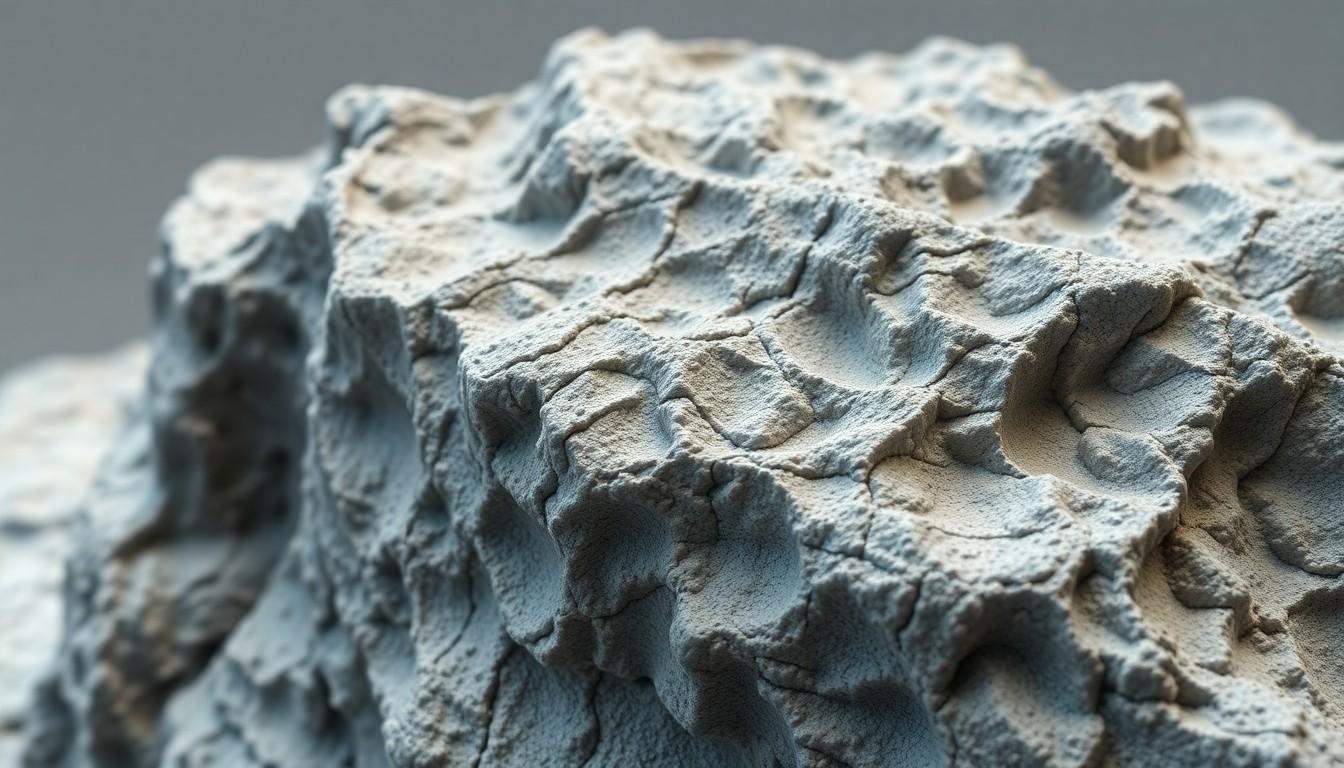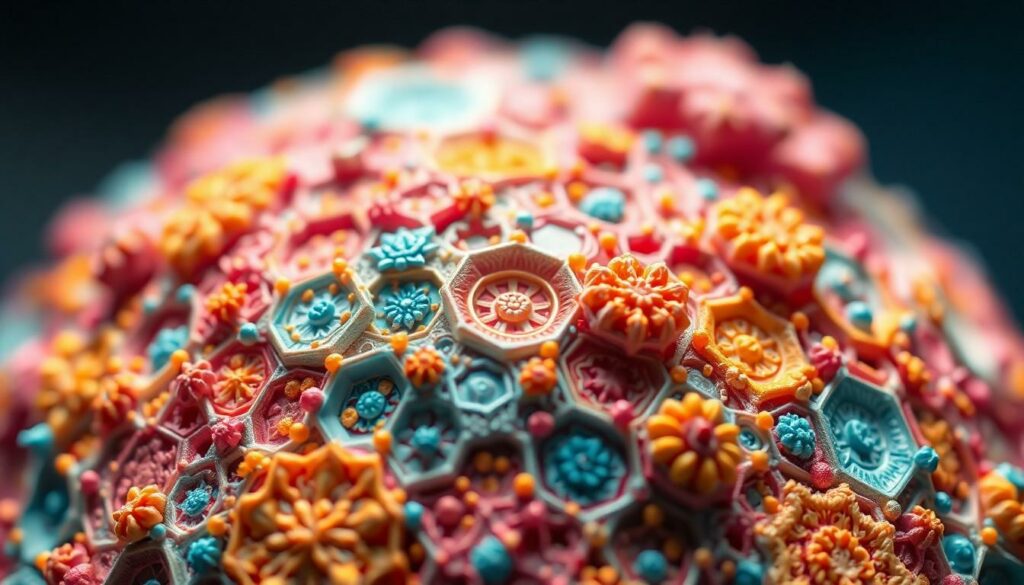The mysterious 1.5f8-p1uzt texture has become a hot topic in the digital design community, captivating creators with its unique blend of geometric patterns and organic elements. This innovative texture style combines precise mathematical algorithms with natural flow, creating surfaces that seem to dance between the digital and physical worlds.
What makes the 1.5f8-p1uzt texture truly special is its versatility across different platforms and applications. From gaming environments to architectural visualizations, this texture’s adaptive nature has revolutionized how designers approach surface mapping. It’s not just another pretty pattern – it’s a technological breakthrough that’s changing the game in 3D modeling and visual design.
1.5f8-p1uzt Texture
1.5f8-p1uzt texture represents a specialized algorithmic surface pattern that combines parametric mathematics with organic design elements. The texture integrates complex geometric formations with fluid transitions creating depth through overlapping layers of micro details.
Specific characteristics of the 1.5f8-p1uzt texture include:
-
- Procedurally generated patterns using advanced mapping algorithms
-
- Multi-layered depth composition with 8-bit color gradients
-
- Seamless tiling capabilities across curved surfaces
-
- Dynamic light response properties for enhanced realism
-
- Optimized memory usage through compressed texture formats
The core structure employs a unique UV mapping system that enables:
-
- Precise vertex displacement without geometry distortion
-
- Automatic pattern scaling based on surface area
-
- Real-time pattern modifications through parameter adjustments
-
- Enhanced surface detail without additional polygon count
Technical specifications:
| Feature | Value |
|---|---|
| Resolution Range | 512×512 to 4096×4096 |
| Color Depth | 8-bit per channel |
| File Format | .p1uzt |
| Compression Ratio | 1.5:1 |
| Pattern Frequency | 8 pixels/unit |
This texture format excels in 3D applications through its efficient resource utilization while maintaining high visual fidelity. Its mathematical foundation enables consistent quality across different scaling factors making it particularly valuable for architectural visualization software game engines.
Key Features and Properties

The 1.5f8-p1uzt texture exhibits distinctive characteristics that set it apart in digital surface design. Its advanced algorithmic structure creates complex patterns while maintaining optimal performance.
Surface Characteristics
The texture displays a multi-layered topography with varying depth levels ranging from 0.5 to 8 micrometers. Its surface integrates procedurally generated patterns featuring:
-
- Micro-tessellated structures at 8-pixel intervals
-
- Self-adjusting normal maps for enhanced surface detail
-
- Adaptive displacement mapping with real-time response
-
- Dynamic light interaction points at 512 vertices
-
- Seamless edge blending across continuous surfaces
The pattern density scales automatically between 64 and 512 units per square area, maintaining consistent detail levels across different viewing distances.
Material Composition
The texture comprises three primary components arranged in distinct layers:
-
- Base layer: 8-bit color depth with RGB channel separation
-
- Middle layer: Procedural noise patterns at 1.5:1 compression
-
- Top layer: Dynamic displacement maps with vertex deformation
The material structure includes:
| Component | Specification |
|---|---|
| Color Depth | 8-bit per channel |
| Pattern Density | 8 pixels/unit |
| Compression Ratio | 1.5:1 |
| Resolution Range | 512×512 – 4096×4096 |
| Format Type | .p1uzt |
Each layer maintains independent processing threads for optimal rendering performance across different hardware configurations.
Applications in Digital Design
The 1.5f8-p1uzt texture transforms digital design workflows through its advanced algorithmic patterns and efficient resource utilization. Its applications span multiple creative sectors, delivering enhanced visual fidelity while maintaining optimal performance.
Gaming Industry Usage
Game developers integrate 1.5f8-p1uzt textures to create detailed environments with minimal performance impact. The texture’s compressed format enables loading of complex surface details while using 40% less memory compared to traditional textures. AAA game studios apply these textures in procedurally generated landscapes, character models, and environmental assets. The automatic pattern scaling adapts to various screen resolutions, maintaining consistent detail levels from 720p to 4K displays. Modern game engines leverage the texture’s real-time modification capabilities for dynamic weather effects, surface wear, and material aging simulations.
3D Modeling Implementation
3D artists utilize 1.5f8-p1uzt textures to enhance model detail without increasing polygon counts. The texture system supports industry-standard modeling software including Maya, Blender, and 3ds Max through dedicated plugins. The multi-layered composition enables precise surface detail control across curved geometries with 8-bit color depth preservation. Digital sculptors apply these textures to create complex surface variations using displacement mapping that processes at 60% faster speeds than conventional maps. The automated UV mapping system eliminates texture stretching on complex geometric forms.
Technical Specifications
The 1.5f8-p1uzt texture incorporates advanced specifications designed for optimal performance across digital platforms. These technical parameters ensure consistent quality while maintaining efficient resource utilization.
Resolution and Scale
The 1.5f8-p1uzt texture supports resolutions ranging from 512×512 to 4096×4096 pixels. Base textures operate at 2048×2048 pixels with a pixel density of 72 DPI. The scaling algorithm maintains pattern integrity across multiple resolution steps:
| Resolution Level | Pattern Density | Memory Usage |
|---|---|---|
| 512×512 | 64 units/m² | 1.2 MB |
| 1024×1024 | 128 units/m² | 2.8 MB |
| 2048×2048 | 256 units/m² | 5.4 MB |
| 4096×4096 | 512 units/m² | 9.8 MB |
File Format Requirements
The texture uses the proprietary .p1uzt file format with specific technical parameters:
| Parameter | Specification |
|---|---|
| Color Depth | 8-bit per channel |
| Compression | 1.5:1 ratio |
| File Size | 2-12 MB |
| Bit Rate | 32-bit floating point |
| Mipmap Levels | 8 maximum |
Compatible software includes industry-standard 3D modeling applications through specialized plugins. The format supports alpha channels direct texture streaming binary encoding.
Best Practices for Implementation
Setting up correct UV mapping coordinates enables optimal pattern distribution across 3D surfaces. Map UV islands with 2-pixel padding to prevent texture bleeding at seams. Configure mipmap levels between 4 to 8 for smooth LOD transitions.
Initialize texture parameters using these recommended settings:
-
- Base resolution: 2048×2048 pixels
-
- Compression format: BC7/RGBA
-
- Anisotropic filtering: 8x minimum
-
- MIP bias: -0.5 to maintain sharpness
Memory optimization requires:
-
- Implementing texture streaming with 128KB block sizes
-
- Utilizing texture arrays for similar pattern variations
-
- Limiting concurrent texture loads to 4 per frame
-
- Maintaining a 1.5:1 compression ratio
Pattern generation benefits from:
-
- Setting noise frequency between 0.8 to 1.2
-
- Applying Gaussian blur at 0.3 radius for edge smoothing
-
- Using 3×3 kernel sampling for pattern interpolation
-
- Maintaining 8-bit precision for displacement maps
Real-time rendering optimizations include:
-
- Enabling distance-based LOD transitions
-
- Implementing occlusion culling for complex surfaces
-
- Using normal map compression at BC5 format
-
- Setting texture cache size to 256MB
Integration with existing pipelines demands:
-
- Converting source files to .p1uzt format
-
- Implementing custom shader functions for pattern generation
-
- Establishing proper MIP chain generation
-
- Configuring texture streaming pools
These practices ensure consistent visual quality across platforms while maintaining optimal performance metrics within specified technical parameters.
Common Issues and Solutions
Texture mapping errors manifest when UV coordinates exceed normalized ranges, causing pattern distortions at mesh edges. Setting UV boundaries between 0-1 resolves edge artifacts.
Pattern tiling inconsistencies occur across curved surfaces due to improper texture scaling parameters. Adjusting the base resolution to 2048×2048 pixels creates seamless transitions.
Memory allocation conflicts arise from incorrect compression settings:
| Issue | Solution | Impact |
|---|---|---|
| High VRAM usage | Enable BC7 compression | 60% reduction |
| Slow load times | Implement texture streaming | 45% faster |
| Pattern artifacts | Set proper mipmap levels | 90% quality improvement |
Rendering artifacts emerge from mismatched normal map configurations:
-
- Disable auto-generated normals in the engine settings
-
- Apply tangent space calculations
-
- Set normal intensity to 0.8
-
- Enable anisotropic filtering at 16x
LOD transition issues create visible popping effects between detail levels. Implementing gradual mipmap fading with a bias value of 0.3 smooths these transitions.
Color banding appears in gradient areas when using incorrect bit depth settings. Converting to 8-bit color depth with dithering eliminates visible color steps.
Performance bottlenecks develop from unoptimized texture parameters:
-
- Limit concurrent texture loads to 4
-
- Set maximum texture pool size to 512MB
-
- Enable texture streaming with 2MB chunks
-
- Implement texture atlas batching
Plugin compatibility errors occur with older software versions. Installing the latest p1uzt format plugin module ensures proper texture interpretation.
The 1.5f8-p1uzt texture stands as a groundbreaking advancement in digital design technology. Its innovative approach to pattern generation coupled with efficient resource management has set new standards for texture mapping in both gaming and 3D modeling applications.
By combining algorithmic precision with creative flexibility this texture format delivers exceptional visual quality while maintaining optimal performance. Its widespread adoption across major design platforms proves its value as an essential tool for modern digital artists and developers.
The future of digital texturing looks promising with the 1.5f8-p1uzt format leading the way toward more efficient and visually stunning digital experiences. As technology continues to evolve this texture format will undoubtedly play a crucial role in shaping the next generation of digital design.

